Subscribe to HydroTerra News


Previous Editions
2024
- November Newsletter
- October Newsletter
- September Newsletter
- August Newsletter
- July Newsletter
- June Newsletter
- May Newsletter
- April Newsletter
- March Newsletter
- February Newsletter
- January Newsletter
2023
- December Newsletter
- November Newsletter
- October Newsletter
- September Newsletter
- August Newsletter
- July Newsletter
- June Newsletter
- May Newsletter
- April Newsletter
- March Newsletter
- February Newsletter
- January Newsletter
2022
- December Newsletter
- November Newsletter
- October Newsletter
- September Newsletter
- August Newsletter
- July Newsletter
- June Newsletter
- May Newsletter
- April Newsletter
- March Newsletter
- February Newsletter
- January Newsletter
2021
- Technology News – December
- HydroTerra News – November
- Technology News – November
- Technology News – October
- HydroTerra News – October
- HydroTerra News – September
- Technology News – September
- HydroTerra News – August
- Technology News – August
- HydroTerra News – July
- Technology News – July
- HydroTerra News – June
- Technology News – June
- HydroTerra News – May
- Technology News – May
- HydroTerra News – April
- Technology News – March
- HydroTerra News – March
- Technology News – February
- HydroTerra News – February
2020
- Supplier Newsletter – December
- Supplier Newsletter – November
- General Newsletter – November
- Supplier Newsletter – October
- Supplier Newsletter – September
- General Newsletter – September
- Supplier Newsletter – August
- General Newsletter – August
- Supplier Newsletter – July
- General Newsletter – July
- General Newsletter – June
- Supplier Newsletter – May
- General Newsletter – May
- Supplier Newsletter – April
- General Newsletter – April
September Newsletter

Three C's of overcoming contaminants: Collaboration, cash and change
21 September 2022HydroTerra is passionate about the environment and our core skill is monitoring facilities and their emissions to the environment. The drivers for what we measure are usually related to achieving compliance. We have a strong regulatory framework in Australia, which works well. But, what I’m a bit worried about – well, getting very worried about – is that compliance-based management is only as good as the rules we have in place, and the rules seem to be lagging.
The spectre of emerging contaminants (ones that we don’t have rules for yet), and the growing evidence that these contaminants have a negative effect on the environment and humans, is extremely concerning. The USEPA stated way back in 2002 that contaminants of emerging concern may be impacting aquatic life.1 While in more recent studies, researchers have concluded that “Substantial evidence supports a negative association between exposure to phthalates, PCBs, PBDEs, pyrethroids, organochloride pesticides and male fertility and fecundity in humans. That is bad news!” 2

It’s comforting to see our regulators (Department of Environment, Water, Land and Planning and the Environment Protection Authority) and researchers (such as the University of Melbourne’s Centre for Anthropogenic Pollution Impact and Management) taking steps to gain a better understanding of the ecosystem level impacts of emerging contaminants, however even they concede we need to know more. And, as quickly as our understanding of this issue grows, so too must our regulations adapt.
I believe industry and researchers have a big role to play in helping the regulators develop the right rules, so we measure the right things and can manage to appropriate settings. I have no doubt we can do it, after all we made the contaminants in the first place!
In this month’s newsletter we look deeper into the world of “forever chemicals” and into some other effects that humans are having on our natural environment.
Richard
- Contaminants of Emerging Concern including Pharmaceuticals and Personal Care Products | US EPA
- Green MP, Harvey AJ, Finger BJ, Tarulli GA. Endocrine disrupting chemicals: Impacts on human fertility and fecundity during the peri-conception period. Environ Res. 2021 Mar;194:110694. doi: 10.1016/j.envres.2020.110694. Epub 2020 Dec 30. PMID: 33385395.
Recent weather tests leachate management system
21 September 2022
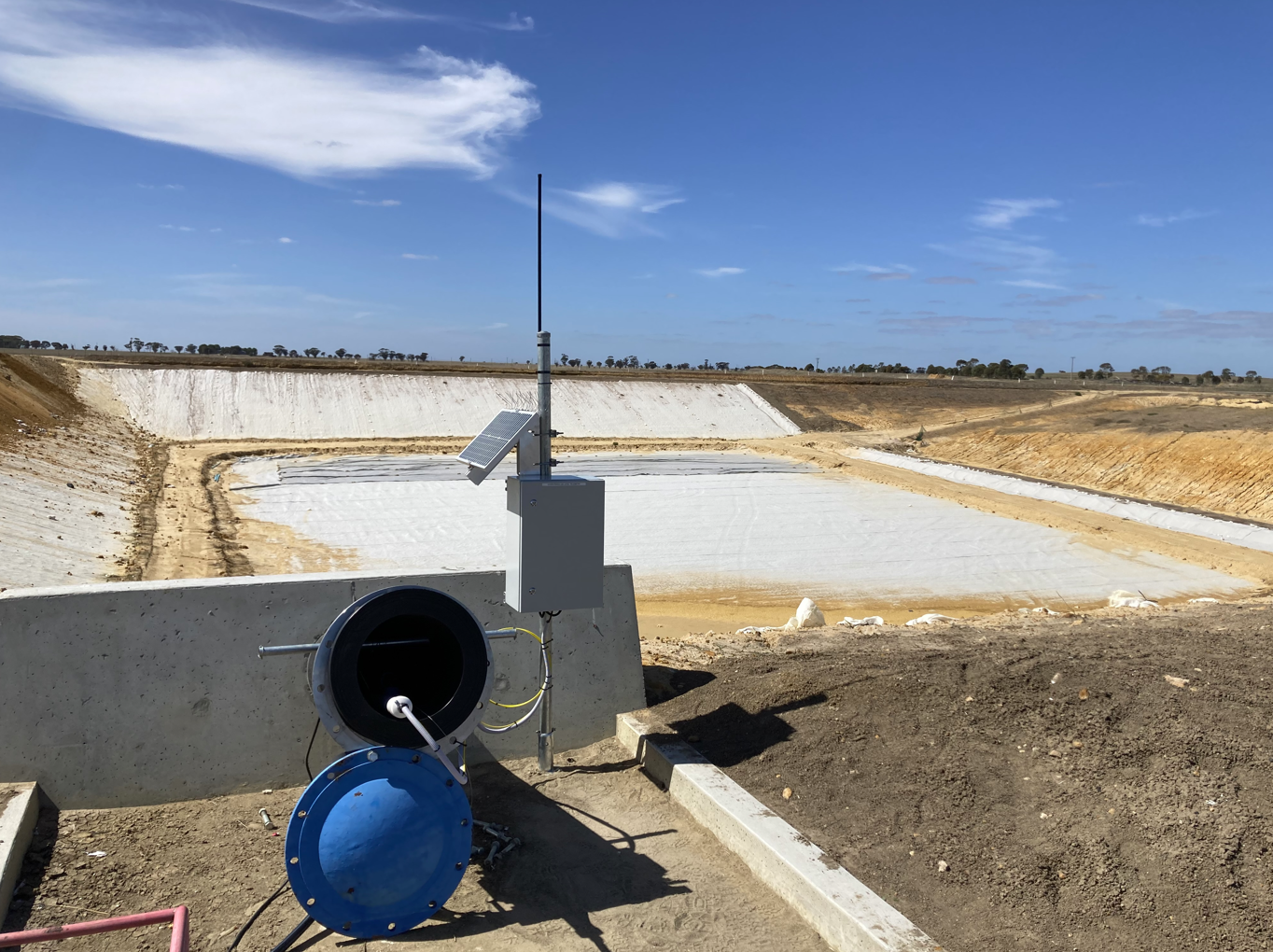
Australia’s favourite tree is…
21 September 2022

Focus on carbon farming
21 September 2022

SampleServe simplifies sampling reporting
21 September 2022
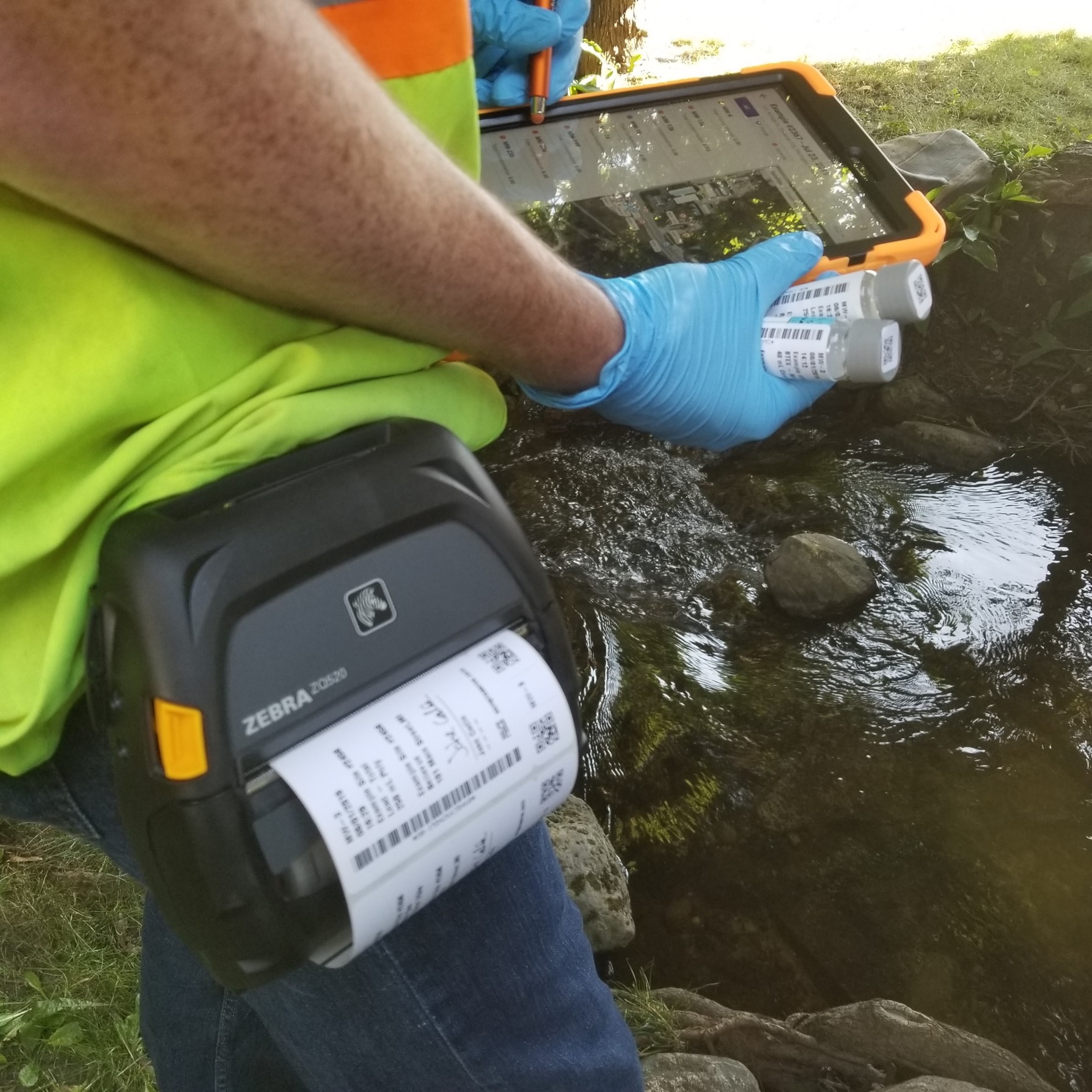
PFASical world of “Forever Chemicals”
21 September 2022

New supplier brings slick detection of oil spills
21 September 2022
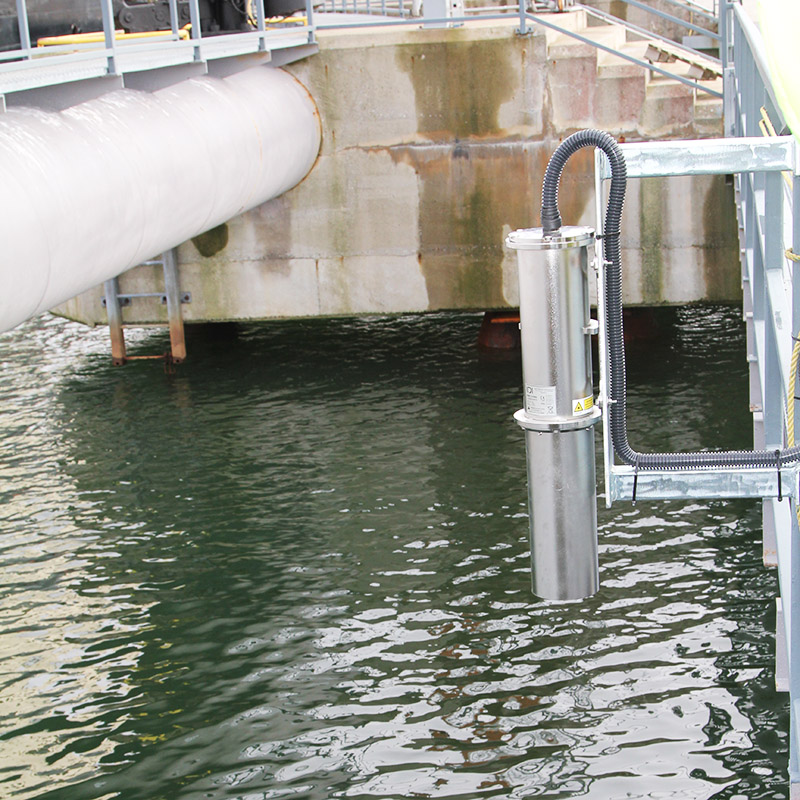
100% up-time, 100% of the time
21 September 2022

Running for the river
21 September 2022
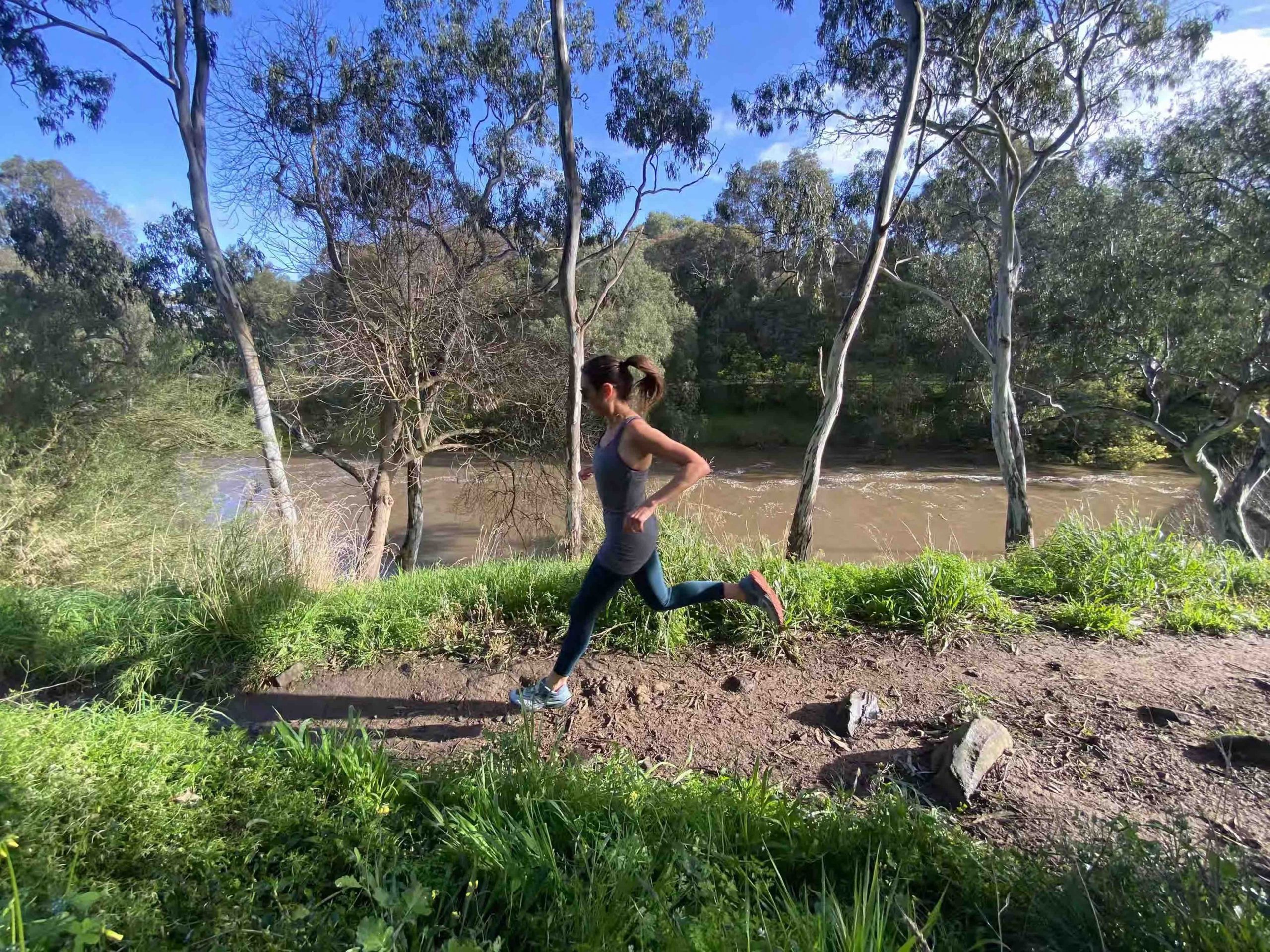
Water level meters galore | Part 1
21 September 2022

Water level meters galore | Part 2
21 September 2022Product
For
Benefits
Specifications
Model 101 Water Level Meter

Measuring the depth to water in wells, boreholes, standpipes, and tanks.
P2 and P7 probes available (see following article)
Markings each mm
Sensitivity adjustable to conductivity
Permanent laser markings
Non-stretch PVDF tape with stainless steel conductors
Rugged, corrosion proof components
Strong, flexible tapes
Easy to splice and repair
PVDF replacement tapes are interchangeable with other meters
Temperature: 20°C to +50°C
Submerged operating temperature: 20°C to +80°C
Tape lengths: P7: 30 – 1500m & P2: 30 – 300m
Model 101D Water Level Draw Down Meter
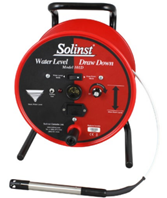
Water level mode allows accurate depth to water measurements in wells, boreholes, standpipes and tanks
Drawdown function used to monitor falling hydraulic head during low flow sampling, pumping & other aquifer/well tests
Also ensures a pump’s intake remains submerged during purging or well development
Both static water level and drawdown modes in one Meter
One convenient toggle makes it easy to switch between two functions
Uses very durable, accurately laser marked flat tape
Tape lengths up to 1500m
Replacement tapes interchangeable with other Meters
Has same robust, submersible probe as the 101 P7 WLM
Temperature: 20°C to +50°C
Submerged operating temperature (tape/probe): -20°C to +80°C
Tape lengths: 30-1500m
Model 101B Basic Water Level Meter
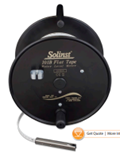
An economical and basic, yet durable instrument to measure groundwater levels. It is ideal for measuring depth to water in wells, boreholes, standpipes, and tanks
Very affordable
No buttons or controls to operate
Reel is easy to wind
Rugged, corrosion resistant components
Strong, flexible tape is easily spliced
Simple, leak-proof probe
Designed to reduce false signals in cascading water
Tape lengths: 30 – 100m
Model 102 Laser Marked Water Level Meter
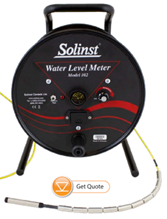
Designed to measure groundwater levels, especially in small diameter tubes and piezometers, or where a flexible assembly is needed to get past down hole instrumentation
4 mm (0.157″) diameter probe
Rugged, corrosion resistant components
Strong, flexible cable is easily spliced
Replacement probes, cables and parts
Precise markings every mm
Tape lengths: 30 – 300m
Operating temperature of reel: -20°C to +50°C
Operating temperature of cable/probe: -20°C to +80°
Conductivity detection threshold: P10: 40 µS/cm P4: 100 µS/cm
Model 103 Tag Line

Uses a weight attached to a laser marked cable or tape, and is principally designed for use during the installation of monitoring wells.
Also provides a simple method to measure the depth to the bottom of a well
Accurately measure depth to backfill during well construction
Measured safety support line for deployment of pumps, bailers, samplers and packers
Comes in both the Laser marked cable and PVDF Laser marked cable
Tape lengths: 30 – 1500m
Laser Marked Cable: Minimum break strength of 122 kg
PVDF Laser marked cable: Break strength of greater than 100 kg
Model 104 Solinst Sonic Water Level Meter

Portable, acoustic ranging instrument designed to simply and quickly measure depth to static water level in a well, piezometer, sounding tube, or any closed pipe
Measures down to 600 m
Ability to set in Power Save mode to prolong battery life
Can set the water level measurement range minimum and maximum to ignore interference from known well features
Settings allow you to account for different well/drop tube diameters & heights
Backed by a Solinst 3-year warranty
Supplied with a plastic cover for larger wells and a convenient Solinst Field Bag
Operating temperature: -20 to 45ºC
Battery life: Up to 500 hours of use
Accuracy: 3 cm
Resolution: 1 cm
Water level reading update time: 1 sec @ 150m, 4 sec @ 600m
Operating range: 3 to 600m
Model 105 Well Casing & Depth Indicator
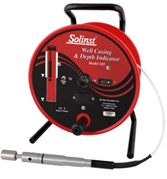
Easy to use when detecting metal well casing or measuring total well depth. It offers both of these functions without having to switch out the probe.
Measuring total well depth
Groundwater well installation
Detecting gaps in well casing
Installing telescoping well screen
Packer and downhole instrument installation
Hydrofracturing
Confirming existing well construction
Decommissioning abandoned wells
Operating temperature of reel: -20°C to +50°C (tape/probe): -20°C to +80°C
Measurements: ±0.06 m (0.2 ft)
Tape lengths: 30 – 1500m
Model 107 TLC Meter Temperature, Level, Conductivity

Ideal for profiling conductivity and temperature in wells and open water
Displays accurate measurements of conductivity and temperature on a convenient LCD display
Tape lengths to 300m
Rugged Solinst reel and accurate laser marked tape
Probe diameter 19 mm (3/4″)
Standard 9V alkaline battery gives 90 hrs. of use
Auto-Off after 8 minutes
Profiling conductivity and temperature in wells and open water
Salinity studies
Saltwater intrusion investigations
Testing for water quality impairments from road salt
Tracer tests
General indication of chemical contamination level
Early warning of changes in water quality at Landfills & Industrial sites
Tape lengths to 30 to 300m
Operating temperature of reel: -20°C to +50°C
Submerged operating temperature (tape/probe): -20°C to +60°C
Temperature accuracy: +/- 0.2°C
Conductivity ranges: Full range: 0 to 80,000 uS/cm
Calibrated range: 500 to 80,000 uS/cm
Conductivity accuracy: 5% of reading or 100 µS (whichever is greater)
Exploring the depths of the two most popular water level meters
21 September 2022
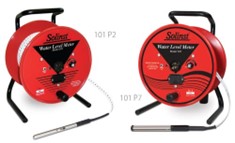
What's On
21 September 2022When
Who
What
Link
Mon 26 Sep
ALGA and RMIT University
Melbourne Hybrid Student Night – Environmental industry information Evening
Fri 30 Sep
HydroTerra Webinar Series
Tailings Dam Monitoring webinar with Gavin Mudd, Steve Cody & Richard Campbell
Registrations open soon. Register your interest in the topic here
3 – 10 Oct
Irrigation Australia
24th ICID Congress and Irrigation Australia Conference & Exhibition
7 Oct, 11.15am – 12.45pm
One Basin CRC
One Basin CRC Workshop at the 24th ICID Congress and Irrigation Australia Conference & Exhibition
Mon 26 – Tue 27 Oct
Waste Expo Australia (free event) at Melbourne Exhibition and Conference Centre
Largest gathering of waste management and resource recovery professionals in the country to learn how we can transform the way we use materials, ensure effective recovery and reduce waste sent to landfills
Tue 27 Oct
ALGA Webinar
Topic: Enhancement of Site Evaluation Projects by Digital Innovation
Fri 28 Oct
HydroTerra Webinar Series
Tree of knowledge: Next gen quantification of forests and forest carbon with Keith Cook CEO of Arbormeta
Registrations open soon. Register your interest in the topic here
Mon 31 Oct – Fri 4 Nov
National Regions Australia
National NRM Knowledge Conference 2022, Margaret River



